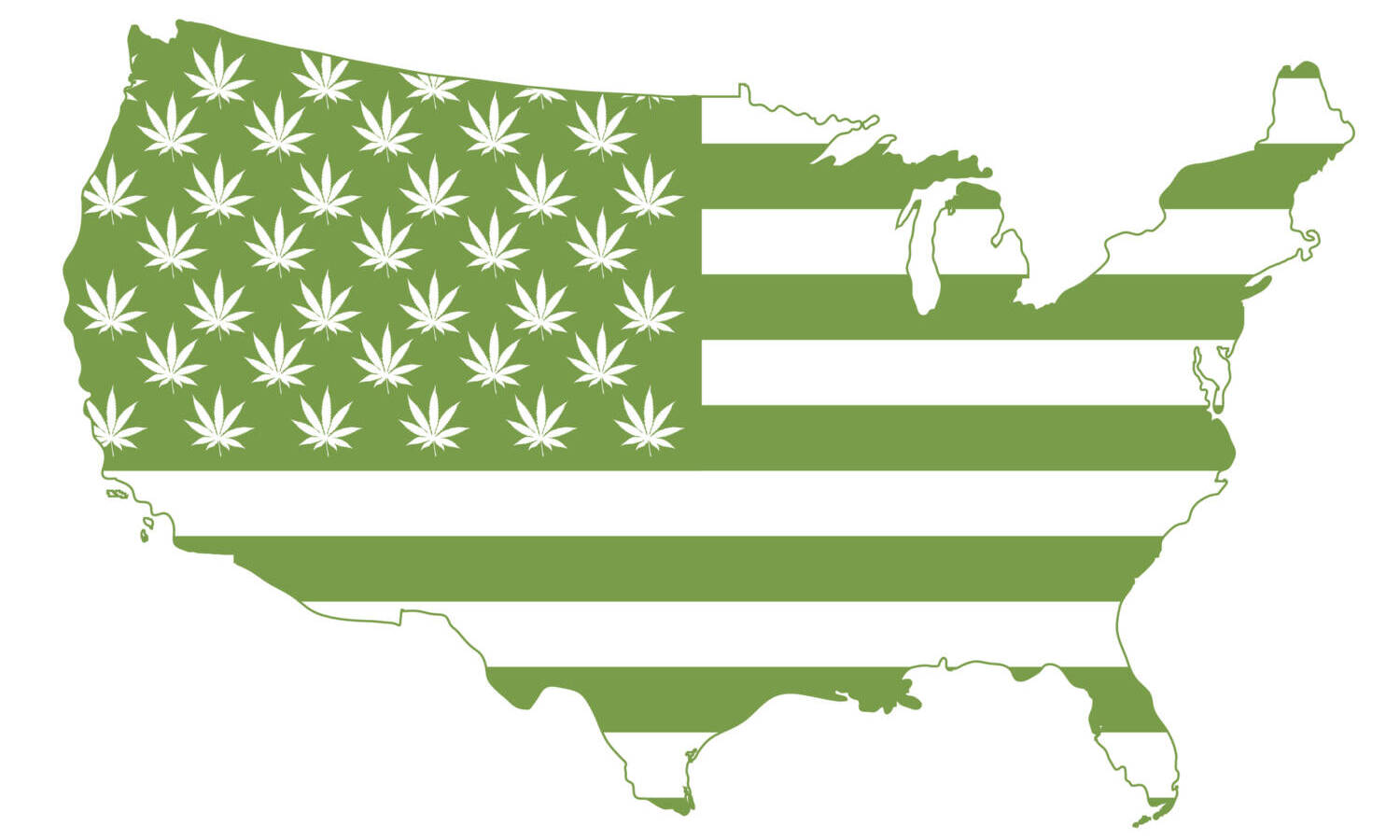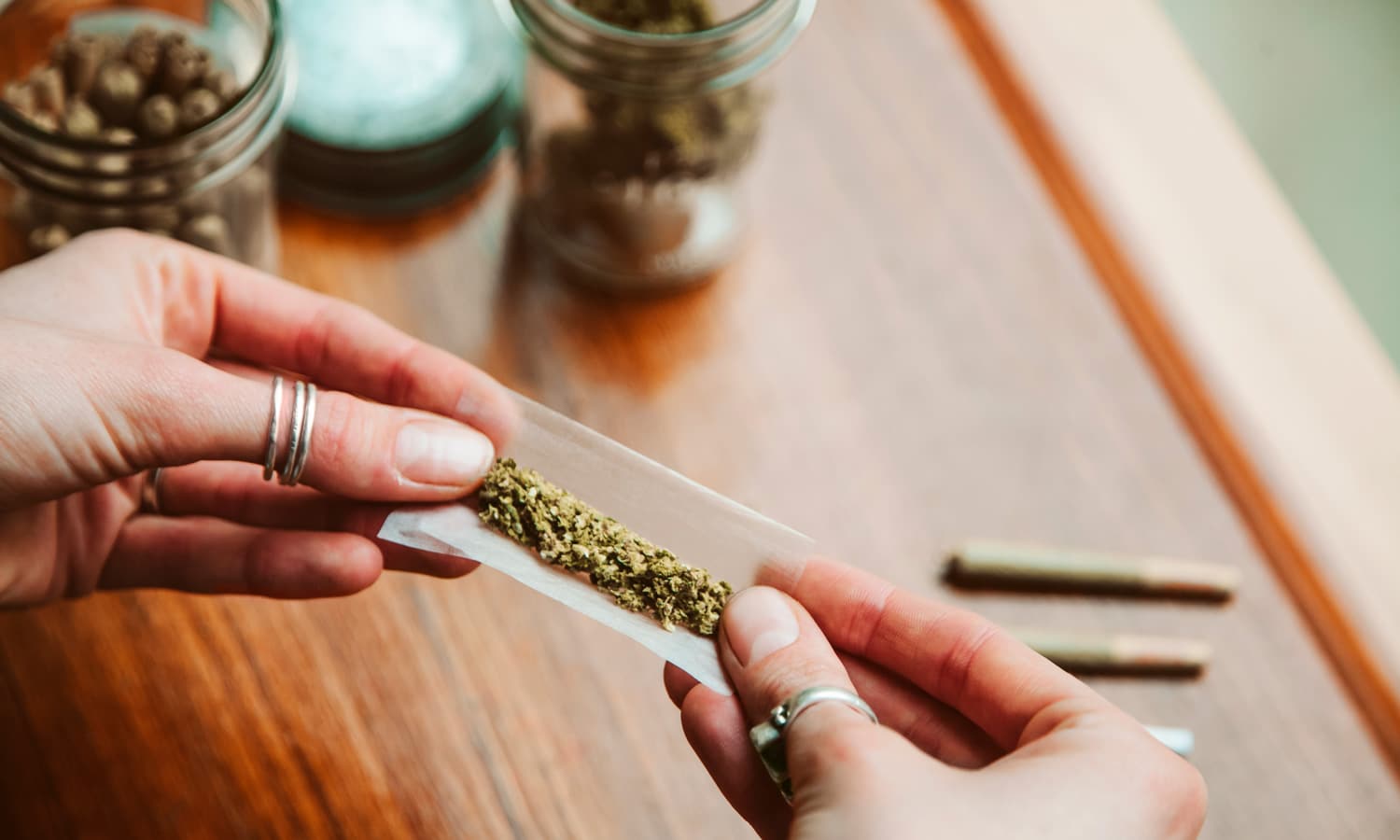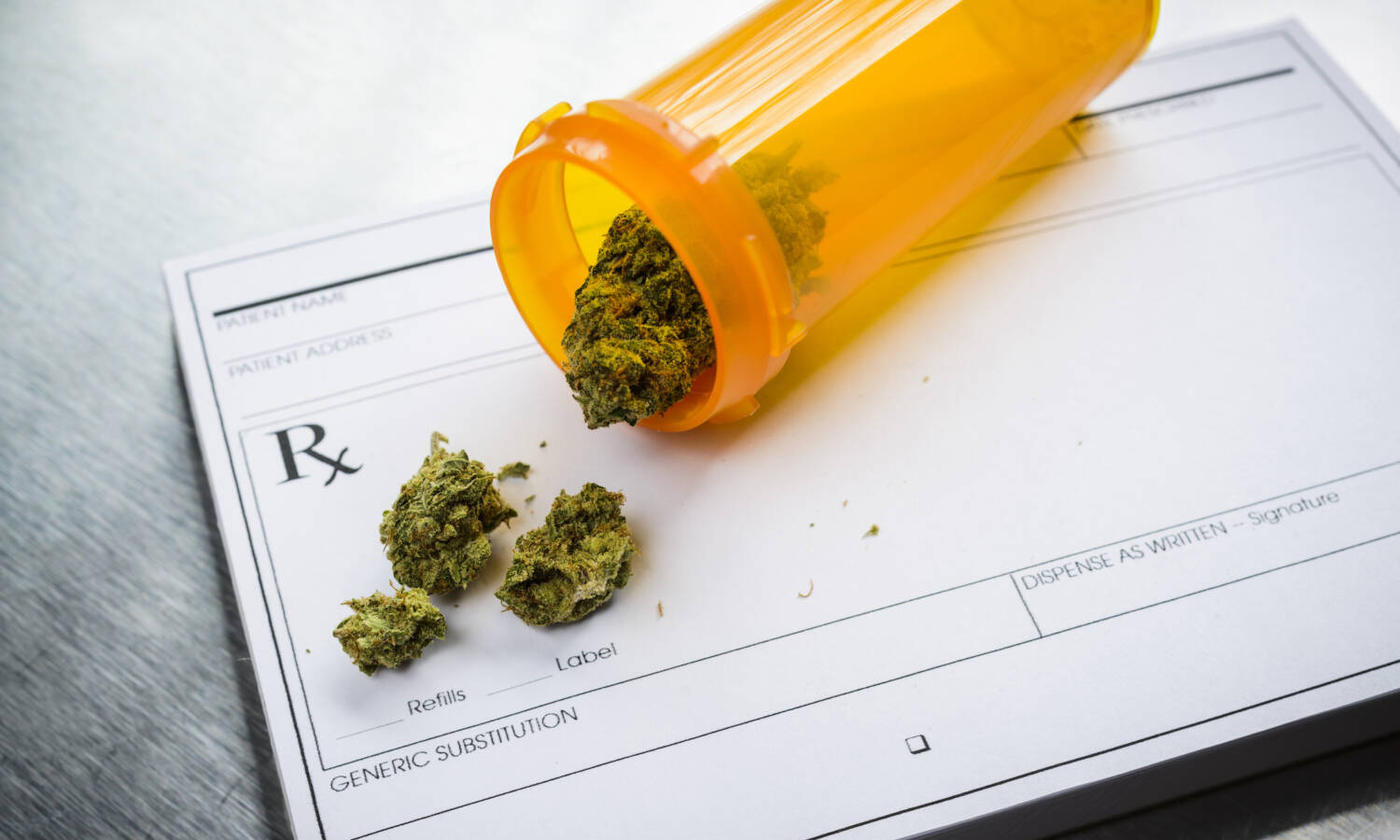Your essential guide to which states have legalized marijuana, and how to proceed when buying weed there.
This article originally appeared on Cannabis.net and has been reposted with permission.
Now that the stigma surrounding cannabis is lifting, more and more people realize that medical marijuana can help enhance the quality of their lives. Most U.S. states have initiated MMJ programs, but each has different qualifying conditions, possession limits, and home-grow regulations.
This article will cover the basics for each state with legalized medical marijuana in 2022.
RELATED: Grading Every State’s Marijuana Program — How Well Did Your State Do?

In most states, getting a medical marijuana card involves:
- Obtaining a written recommendation from a physician
- Filing an application
- Paying a non-refundable fee
The association, My Marijuana Cards, can help you discover how to get a medical marijuana card in your state and find a doctor who can recommend medical cannabis.
US States with Medical Marijuana Programs
Alaska
Alaska legalized medical marijuana on November 4, 2014, and initiated its program in 2016.
- Conditions: Most chronic or debilitating diseases
- Limit: 1 ounce
- Home grow: 6 plants
Arizona
The Arizona state government passed Proposition 203 in 2010, legalizing medical marijuana. Arizona opened its recreational market in January 2022.
- Conditions: Most chronic or debilitating diseases.
- Limit: 2.5 ounces
- Home grow: Only for patients who live more than 25 miles from a dispensary.
Arkansas
Arkansas residents voted in favor of medical marijuana in 2016, and the law was amended in 2017.
- Conditions: Debilitating conditions that have not responded to any other treatment in six months
- Limit: 2.5 ounces
- Home grow: No
California
The first state to legalize medical marijuana, California has given patients access to cannabis products since 1996.
- Conditions: Any condition with a doctor’s recommendation.
- Limit: 8 ounces
- Home grow: 6 mature and 12 immature plants
Colorado
Colorado initiated its MMJ program in 2000 and was one of the first states to legalize recreational marijuana in 2012.
- Conditions: Qualifying debilitating medical conditions
- Limit: 8 grams/day
- Home grow: 6 plants

Connecticut
In 2012, Connecticut became the 17th state to legalize medical marijuana.
- Conditions: A wide range of chronic conditions
- Limit: 3.5 ounces/month
- Home grow: 3 mature and 3 immature plants
Delaware
Delaware’s SB17 legalized medical marijuana in 2011.
- Conditions: Cancer, AIDS, PTSD, cirrhosis; ALS, Alzheimer’s, cachexia, chronic pain, and severe nausea, seizures, or muscle spasms.
- Limit: 6 ounces
- Home grow: No
Florida
Florida’s MMJ Legalization Initiative was passed in 2016.
- Conditions: As determined by a licensed physician
- Limit: 70-day supply
- Home grow: No
Hawaii
Hawaii started its medical cannabis program in late 2000. In 2022, the state stopped requiring doctors’ approvals for patients over 65.
- Conditions: Cachexia, cancer; Chrohn’s, chronic pain, seizures, glaucoma; HIV/AIDS, MS multiple sclerosis, nausea, and other conditions subject to state approval.
- Limit: 4 ounces
- Home grow: 10 plants
Illinois
Illinois initiated its MMJ Program in 2013 and became a legal recreational cannabis state in 2020.
- Conditions: As determined by the physician; subject to state approval.
- Limit: 2.5 ounces
- Home grow: No
Louisiana
Louisiana started its limited medical cannabis program after legislation was passed in 2017.
- Conditions: Cachexia, cancer; Crohn’s disease, epilepsy; HIV/AIDS, muscular dystrophy, multiple sclerosis, seizure disorders, spasticity.
- Limit: 30-day supply of non-smokable products
- Home grow: No

Maine
Maine’s citizens have had access to medical cannabis since 1999.
- Conditions: Seizures, glaucoma, MS, nausea, HIV/AIDS, cancer, hepatitis C, ALS, Crohn’s, Alzheimer’s, Cachexia, and other illnesses approved by the state
- Limit: 2.5 ounces
- Home grow: 6 plants
Maryland
Eligible patients gained access to Maryland’s MMJ program in 2013.
- Conditions: Any severe condition for which other treatments have been ineffective
- Limit: 120 grams
- Home grow: No
Massachusetts
Massachusetts implemented its medical marijuana program in 2013.
- Conditions: As determined by the patient’s physician
- Limit: 10 ounces every two months
- Home grow: 12 flowering, 12 vegetative
Michigan
Michigan’s MMJ program started in 2008, and recreational cannabis sales began in 2018.
- Conditions: Cancer, HIV/AIDS, hepatitis C, glaucoma, ALS, Crohn’s, epilepsy, MS, Alzheimer’s, nail-patella, cachexia, and severe pain, nausea, seizures, or muscle spasms
- Limit: 2.5 ounces
- Home grow: 12 plants
Minnesota
Minnesota voters passed a bill legalizing MMJ in 2014.
- Conditions: ALS, cancer/cachexia, AIDS, glaucoma, seizures; severe and persistent muscle spasms, autism, sleep apnea, and terminal illness
- Limit: 30-day supply; no smokables
- Home grow: No
Mississippi
Mississippi began accepting applications for its MMJ program in 2022.
- Conditions: A range of serious conditions
- Limit: TBD
- Home grow: TBD
Missouri
Missouri voters passed medical marijuana legislation in 2018.
- Conditions covered: Chronic conditions as determined by a physician
- Limit: 4 ounces/month
- Home grow: 6 plants
Montana
Montana’s MMJ program began in 2008.
- Conditions: Cachexia, chronic pain or nausea, epilepsy, MS, Crohn’s
- Limit: one ounce
- Home grow: 6 plants

Nevada
Nevada approved MMJ in 2000 and became a legal recreational state in 2017.
- Conditions: HIV/AIDS, cancer; MS, epilepsy, glaucoma; cachexia; chronic nausea or pain, and other conditions approved by the state
- Limit: one ounce
- Home grow: 7 plants
New Hampshire
New Hampshire launched its Therapeutic Cannabis Program in 2013.
- Conditions: Illnesses and conditions that cause serious symptoms that cannabis may relieve
- Limit: 2 ounces
- Home grow: No
New Jersey
New Jersey started taking applications for its MMJ program in 2011, and recreational sales are coming soon.
- Conditions: A wide range of severe and terminal illnesses
- Limit: 2 ounces
- Home grow: No
New Mexico
In 2007, New Mexico’s residents gained access to medical cannabis.
- Conditions: Arthritis, chronic pain, neuropathy, nausea, cachexia, hepatitis, Crohn’s, PTSD, ALS, cancer; glaucoma, MS, spinal cord damage, epilepsy, HIV/AIDS, terminal illness
- Limit: 6 ounces
- Home grow: 16 total, 4 mature
New York
New York legalized medical marijuana in 2014 and became a legal recreational cannabis state in 2021.
- Conditions: As recommended by a physician
- Limit: 3 ounces; 28 grams of concentrate
- Home grow: 6 plants
North Dakota
North Dakota passed its Compassionate Care Act in 2016.
- Conditions: Upon doctor’s recommendation
- Limit: 3 ounces
- Home grow: 8 plants if more than 40 miles from a dispensary
Ohio
Ohio’s MMJ program has operated since 2018.
- Conditions: As determined by the state medical board
- Limit: 90-day supply
- Home grow: No
Oklahoma
Oklahoma launched its medical cannabis program in 2018.
- Conditions: As determined by physician
- Limit: 8 ounces
- Home grow: 6 mature plants/ 6 seedlings
Oregon
Oregon followed California in initiating a medical marijuana program in 1998. The state became recreational in 2014.
- Conditions: Depending upon state approval.
- Limit: 24 ounces
- Home grow: 6 mature, 18 seedlings
Pennsylvania
Pennsylvania legalized MMJ in April of 2016.
- Conditions: As published on PA’s official website
- Limit: 30-day supply
- Home grow: No
RELATED: Should Workers’ Comp Cover Medical Marijuana? Feds To Weigh In On Growing Issue

Rhode Island
Rhode Island residents could apply for MMJ cards starting in 2006.
- Conditions: Epilepsy, MS, cancer, wasting syndrome, Crohn’s, Alzheimer’s, chronic pain
- Limit: 2.5 ounces
- Home grow: 12 plants
Utah
Utah initiated its MMJ program in 2018.
- Conditions: A wide range of diseases and conditions
- Limit: 2 ounces
- Home grow: 6 plants for people more than 100 miles away from a dispensary
Vermont
Residents of Vermont started applying for its MMJ program in 2004.
- Conditions: HIV/AIDS, cancer; MS, glaucoma; multiple sclerosis, cachexia, chronic pain, PTSD, nausea, seizures, Crohn’s disease, Parkinson’s
- Limit: 2 ounces
- Home grow: 2 mature, 7 immature
Washington
In 1998, Measure 692 legalized MMJ in Washington state.
- Conditions: Most chronic conditions upon state approval
- Limit: 24 ounces
- Home grow: 15 plants
Washington, DC
After an initial ban by city officials, residents of the nation’s capital gained access to medical marijuana in 2010.
- Conditions: Any condition that’s “chronic or long-lasting; debilitating; serious medical condition treatable with marijuana”
- Limit: 2 ounces
- Home grow: No
West Virginia
Registration for West Virginia’s MMJ program began in 2021.
- Conditions: Terminal illness, cancer, ALS, PTSD, HIV/AIDS; ALS; Parkinson’s, MS, spinal cord damage, epilepsy, neuropathy, Huntington’s, Crohn’s, seizures, sickle cell anemia, or chronic pain in certain cases
- Limit: 30 day supply
- Home grow: No
Virginia
Virginians gained legal access to medical cannabis in 2020.
- Conditions: Glaucoma, cancer, and as determined by physician
- Limit: one ounce
- Home grow: 4 plants
This article originally appeared on Cannabis.net and has been reposted with permission.


